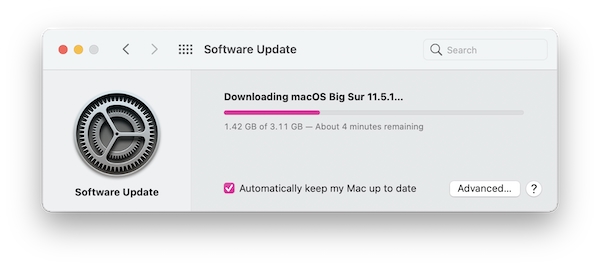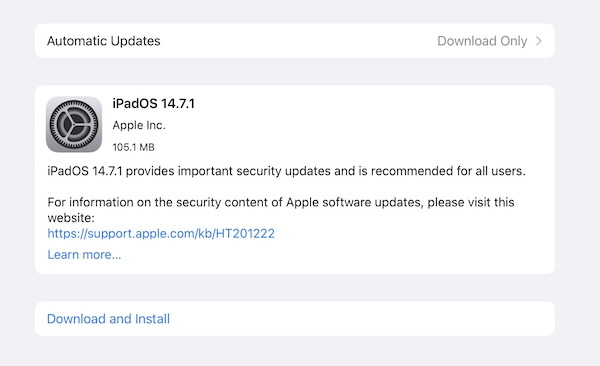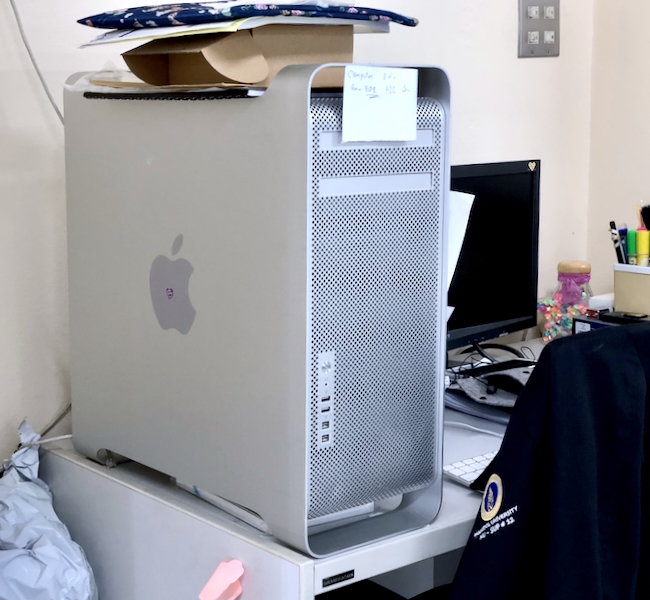|
|
Tuesday Comment: Future Hardware Ideas; Supplemental macOS update; Technical Help for SeniorsBy Graham K. Rogers
In the meantime, even before the 13 is out of the door, we are being told that the iPhone 14 will have a titanium alloy chassis (body, enclosure - depending on source), which does indeed sound sensible. Several of my cameras are made of this and are fairly robust.
As the article points out we may expect the next release of macOS (Monterrey) around September. The first release of the next iteration of the OS is usually closely linked to announcements of Macs; and if there is to be a new processor (M1X, M2?) that would be reflected in macOS itself. Without even mentioning the naming specifics of chips that might be involved, hoakley makes what I think is a pretty close assumption of what we might expect in the next few months from Apple
While the iMac Pro is mentioned - more in its passing - there is no firm suggestion as to when any replacement might be offered. As Apple also discontinued the color-matched accessories shortly after the iMac Pro was ended, if there is such a device in the future, we may be looking at different color schemes.
A contradictory report appeared after the weekend that suggested the next (2022) Mac Pro would use Intel's Ice Lake Xeon W-3300 workstation chips (Juli Clover, MacRumors). As Apple is committed to an all-Apple silicon lineup, this seems odd, unless the device could be offered with alternative setups, which could suit some corporate buyers who might be reluctant to switch to what might be (at the time) untried hardware. Julio Clover also wonders if there might be two Mac Pro versions: a smaller version that has been rumored for a while and a larger (cheese-grater Mac-sized) device that continues with Intel chips. That's a 50-50 from me.


I could see that the main problem, apart from the size of the antenna, was the position. The family home is in a valley, and is surrounded by trees so attenuation (loss or weakening of signal is inevitable). About a year after I told them, in one of our phone conversations, I was told that the dish had fallen down in a storm and they had called a man out to help. He told them that apart from the size of the antenna the main problem was the position. A new larger antenna was positioned higher up after the technician had used a device (probably a signal strength meter) and for the first time in years they were watching TV properly. One of the mobile phones self-destructed and was replaced by an iPhone SE bought from my niece. It had seen better days but was revolutionary in terms of what could be done, even without WiFi, which was still resisted. So for a few months they limped along with intermittent 4G and the occasional burst when they accidentally connected with WiFi while out. Once or twice I managed to have a video chat.
 iPad linked to MacBook Pro
In the 1970s my police driving instructor was bemoaning the need to teach learner drivers. He was used to teaching the skills to drive fast and safely to people who had held driving licences for some years. Now he was asked to teach novices. As he said, the first time someone steps off a bus in front of them, they have nothing to draw on so the instructor has to be ready with more than acid comments when the student driver freezes. When I first experienced, and then taught using computers in 1985 (MS DOS 2.7 and Wordstar) in writing classes, the students had two skills to learn. Initially, the commands that were needed to make the Zenith machines (twin floppy disks) do what was needed were taught and reinforced. Within a few days, these Illinois teens with zero computer experience had picked up enough to work on writing skills. By the end of semester, not only could these Freshmen write well enough for academic work, but they took away some basic computer skills. Older people are far more resistant to new ideas and technology.
Not long into the phone call this week, I was asked if we might try the iPad connection. I had updated my FaceTime settings on the Mac this week as the iCloud address had been omitted somehow and that changed other settings on all the devices as iCloud synchronized. While I was still talking on Viber on the Mac, the iPad Pro started to call. I think my family were surprised by how easy it had been to make the connection and how good that link was: video and sound. I teased them and asked how much it would cost: nothing of course. A call of a few minutes to me a few years ago had cost £30, while Viber was usually under $1. Now that the gates have been prised apart I am hoping for some more development in terms of familiarity and comfort when using the iPad. We are already going through the stage of the interesting Facebook links, so there is progress of sorts.
Graham K. Rogers teaches at the Faculty of Engineering, Mahidol University in Thailand. He wrote in the Bangkok Post, Database supplement on IT subjects. For the last seven years of Database he wrote a column on Apple and Macs. After 3 years writing a column in the Life supplement, he is now no longer associated with the Bangkok Post. He can be followed on Twitter (@extensions_th) |
|


 This is also suggested by another source as outlined by
This is also suggested by another source as outlined by  The family did react eventually to suggestions I made. For example, the small satellite dish they used would give a sometimes-snowy picture. Sometimes nothing at all.
The family did react eventually to suggestions I made. For example, the small satellite dish they used would give a sometimes-snowy picture. Sometimes nothing at all.
 For years when phoning home, I had used Skype and then Microsoft bought it and it did not take long for it to become unsuitable for me. I switched to Viber and that has served me reasonably well since. Almost every weekend I made the call and we chat for up to an hour. Compared with alternative methods of phoning halfway round the world, the costs were reasonable and I topped up with $4.99 every few weeks. My family continued to use the land line.
For years when phoning home, I had used Skype and then Microsoft bought it and it did not take long for it to become unsuitable for me. I switched to Viber and that has served me reasonably well since. Almost every weekend I made the call and we chat for up to an hour. Compared with alternative methods of phoning halfway round the world, the costs were reasonable and I topped up with $4.99 every few weeks. My family continued to use the land line.
